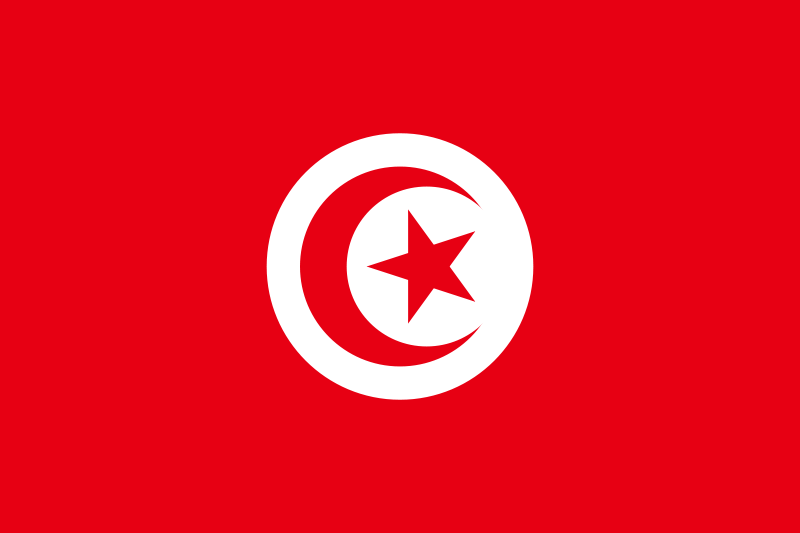TUNISIA:
We may all know what’s happening but do we truly understand it?
The great significance of revolution in the Arab world is of immense importance and to understand the struggles of one people, one struggle, we must look at where it all began.
Enter: Tunisia.
Under the eye of President Zine El Abidine Ben Ali, a cruel oppressor who ruled for over 20 years until he was ousted by protestors, oversaw Tunisia being thrown into a downward spiral of economic turmoil. Reports of high unemployment rates, food shortages and inflations, human rights violations, media censorship, and of course like all “great” authoritarian parties – corruption. These factors built themselves up, bottled, now finally creating the spark of revolt that is now sweeping across the Arab world.
Tunisia does not have a history of revolution, having gained its independence from France in 1957 where it became a Republic in a fairly peaceful manner. Protests themselves are a rare occassion in the country, which has only had two presidents since gaining independence from the French. What we see is an interesting shift then, from a relatively quiet and complacent populace and activist culture to a now internationally renowed and major movement.
In addition to the miserable living conditions, an event that took place in the Tunisian city of Sidi Bouzid became an igniter. The classic tale of the poor oppressed by the police was read once more as a man named Mohamed Bouazizi became the center of media attention and used as a message to show the world how cruel the regime of Ben Ali truly was.
Being the only source of income for his family of eight, Bouazizi operated a vegetable cart where he would sell his various goods at the market – an honest job except for the fact that the cart was unlicensed with the Tunisian government. Stopped by a policewoman, he was soon struck and insulted and had his cart and products confiscated. Angered, Bouazizi went onto the local municipality department to give a formal complaint about the incident; however, he was granted no audience and was dismissed.
Disheartened and bitterly broken with the loss of the only source of income to provide his family with and the humiliation and hopelessness felt from the police brutality, Bouazizi killed himself via dousing himself in gasoline and then setting himself alight with fire. Outrage was substantial and protests took to the streets; however, the police response was violent as they began to physically attempt to disperse the demonstrations. Because of this, riots broke out in anger and retaliation to police injustice and misuse of authority. Sidi Bouzid was alight with the hintings of revolution and political dissent.
However, in fairly traditional methods the police responded with the use of tear gas and batons to dismantle protests. They instilled a curfew, and a few protestors were even shot and killed though the police claimed these shots were fired only out of self-defense.
As December rolled its way on, the protests began to finally reach the capital city of Tunis where solidarity demonstrations were formed for those in Sidi Bouzid. There was a unified factor, a call for jobs, and trade union activists began their marching which was, however, physically stopped by security forces within the city.
Contrary to police action, the protests began to spread elsewhere to other Tunisian cities. Despite their best efforts the authorities could just not contain or quell the rapidly spreading methods of direct action, and many violent events would take place over the coming days.
The battle, though raging hard on the streets spread its way online as the government made censorship sanctions on various media items, a tightening grip that was made to disrupt protest organization. These attemps however had a very negative effect as activist hackers began to target government websites, flooding and crashing servers. Websites like Twitter were used by various activist groups to organize and plan out paths, warnings, times of gatherings, and other helpful messages, the Internet has now become a tool of revolution.
As the demonstrations waged its way onwards, it was only a matter of time before Ben Ali was forced to resign and the people knew this as an unsettled feeling began to overcome the ruling party. The Tunisian military ran a gun battle with various security forces who were fanatically loyal to the President, eventually routing them. With the combination of the peoples strong and determined will and the militarys violent dismissal of the government, the old ruler would soon flee all the way to Saudi Arabia. Army Commander Rashid Ammar pledged to “protect the revolution.” showing in action that the military was in no way ready to side with the government, instead taking on the profession of protecting the populace and property.
Ben Ali didn’t go easily, attemps were made by him and his adminstration to stubbornly hold onto his power. By dissolving the government, he declared a state of emergency under the pretense of protection from the revolutionaries. Groups of three or more citizens were banned from public and private meetings, refusal meant getting arrested or, in some cases, shot. The President then announced he would hold elections in the near future in hopes that his son would replace him, but the protestors didn’t buy a single word and continued the siege against the government. Eventually, through staunch efforts did Ben Ali officially resign, power being handed over to the speaker of parliament, Fouad Mebazaa and a new president, Mohamed Ghannouchi forming a new government on the 17th of January.
Despite the ousting of the corrupted president, many problems began to surface. Violence and looting plagued the movement, the army taking up positions all across Tunisia. The capital’s main train station was torched to the ground, elements still loyal to Ben Ali making their message heard through a blazing inferno. Prisons had jail breaks and riots, residents began to build up neighborhood watches and barricades in self-defense.
At this point there remained four ‘factions’, the protestors, the police, security forces, and militias that supported Ben Ali – all of which were vying for control. The Tunisian army struggled to keep control of the situation as gun battles began to break out, and more protests and marches turned violent due to police and militia aggression.
However, despite the violence, the molding of a new government, a revolutionary government, was underway as elements from major opposition parties unified to form a single ruling power. However, this opposition government would still have to face the one left in place after Ben Ali’s departure, and clashes continued to rampage across the streets. Fouad Mebazza, who had been elected to recieve emergency powers to bypass the newly formed government would continue to demonstrate the last gasps of a dying regime desperatley trying to cling onto their power. Despite attempts at change by the government put in place by Ben Ali, protests continued which resulted in more deaths and on the the 27th of February, replacement President Ghannouchi resigned.
It’s March 4th and the battle still rages, but dissent has spread rapidly. Unstability in the regions surrounding Tunisia have left nationalist and fundamentalist Arabic leaders shaking in their boots. Scenes of solidarity have been expressed throughout the entire world. Tunisia has proven something important and inspiring to the oppressed Arabic people: Not even the mightiest regime can last forever. If the people are united in one fight, in one struggle change will come but one must be ready for sacrifice.
The death tolls are staggering. According to a United Nations team at least 219 people were killed in January during the peak of the revolution. Tunisian government officials had claimed that 72 had died but as is apparent from more reliable investigations this was shown to be a farce and cover-up.
Where will Tunisia head now in its revolt? As organizers strive continously to make attempts at reforming a government from the ashes of the old, the trials of the future still lay before them. However, as global solidarity increases and the fist of civil disobediance spreads outwards the prospect of a brighter tomorrow seems hopeful, the minds of a people united in a cause for liberation.


